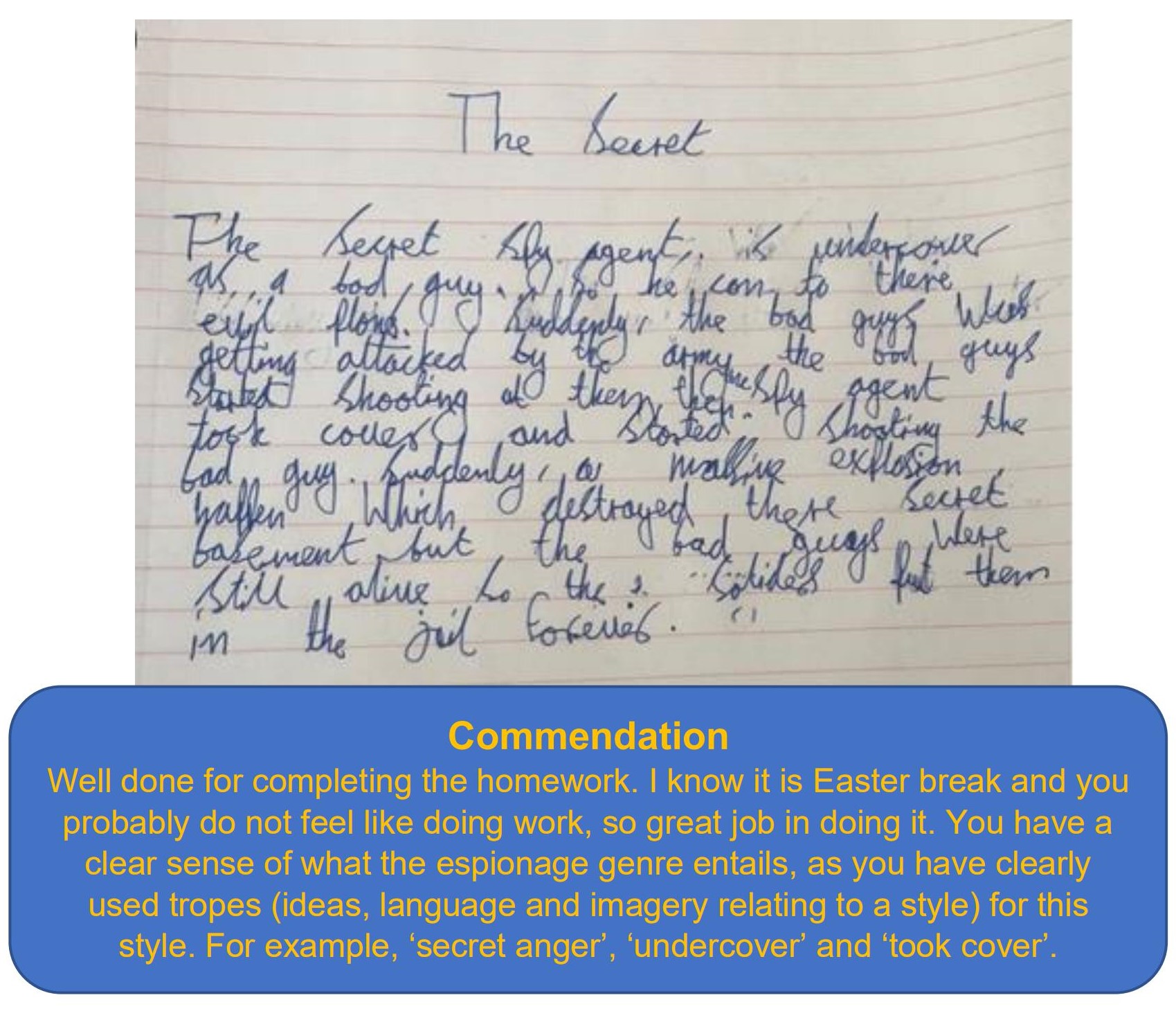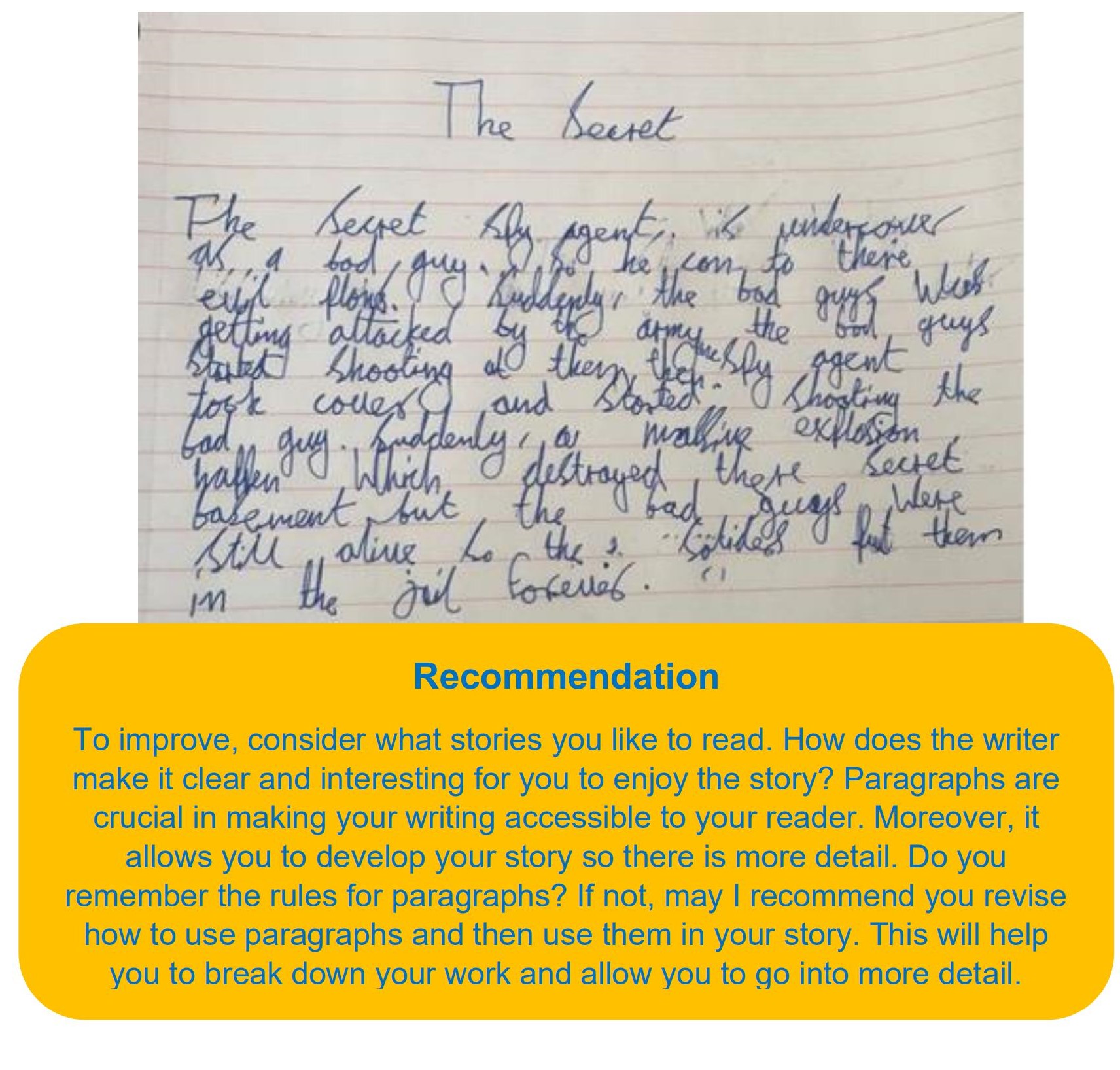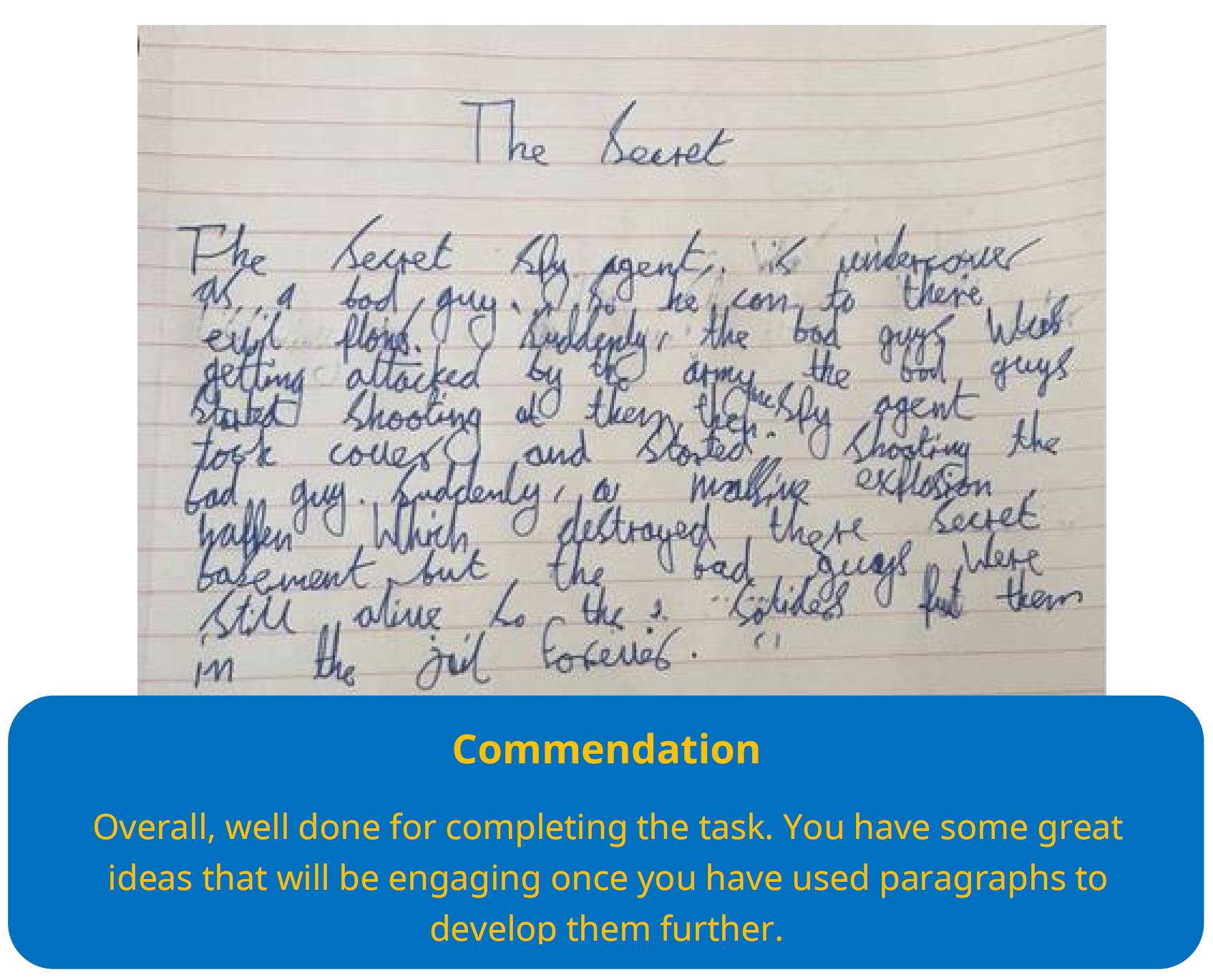In this blog and video, we are going to explore:
- Defining positive marking;
- Why positive marking is important;
- How to positively mark?
- Why self-reflection is vital;
- How to positively mark outside academic work?
After watching the video and going through the blog, you will be able to mark your child’s work in a manner that leaves them feeling satisfied, empowered and motivated to do more. They will have invaluable feedback that will allow them to take actionable steps to improve their work.
Overview
We all require feedback. It serves the purpose of:
- Improving performance
- Measuring how what is done meets the criteria of the task
- Empowering someone to take steps to find out more
In school, students receive marks for their classwork, homework and assessments. To make the marking meaningful, teachers have been encouraged to not simply tick and cross, but to give feedback so that students can read the teacher’s comments and know what to do next time.
1. Defining positive marking
To define positive marking, it is important to look at what it is not in order to get clarity in what it is. Positive marking is not:
- Making trite positive statements that have no value
- Identifying only what is correct and missing out the mistakes
- Reams of written feedback
- Demoralising and belittling
- Comparing siblings’ work, other children, or yourself when you were their age
Now that we know what positive marking is not, what is positive marking then?
Positive marking is giving positive feedback that allows the child to know how well they have done in accordance to the learning objectives (the point of the task). In turn, this allows the child to identify their weaknesses, so they can take steps to improve. The marking and feedback itself will leave the child feeling empowered and motivated to take the next steps.
2. Why positive marking is important
Nobody likes to be wrong; nobody likes to feel undervalued. This is why positive marking is crucial. It allows you to nurture the development and growth of your child, without shaming them or hurting their self-esteem.
So often parents look for the flaws and mistakes in the child’s work that they forget the impact of their words. Again, going back to values, what is valuable in this moment? The child, not the work. What is valuable in that moment for the child? It may seem like the work, but it is the parent’s approval and feedback that is of great importance to them. In participating in the marking and feedback process, it offers you the chance to connect with your child, as it is an opportunity to give your child attention and concentrate on what they have been doing.
3. How to positively mark
We can therefore positively mark our children’s work by following:
- Commendation
- Recommendation
- Commendation
By doing this, the tone of the feedback opens and closes on a positive, uplifting note. The Principle of Recency states the last information received is more likely to be remembered. Therefore, your child will feel good, and as we learnt from the previous modules, feeling good is linked to concentration. Thus, by giving positive feedback, you are priming the child for the next task.
As well as following commendation, recommendation and commendation, it is vital that the marking and feedback is tailored to your child. To do this, we can scaffold the feedback by being:
Specific
Specific
Singular
Supportive


Singular

Supportive


Being specific means making positive statements that are unique to the work, rather than general statements that are applicable to anything. Quoting parts of your child’s work will help demonstrate your genuine praise, as well as show that you have taken time to carefully comb through their work.

Being specific means making positive statements that are unique to the work, rather than general statements that are applicable to anything. Quoting parts of your child’s work will help demonstrate your genuine praise, as well as show that you have taken time to carefully comb through their work.

When giving recommendations, it is crucial to focus on a single point. This allows your child to hone in on that weakness and then take steps to improve. If you overload them with too many recommendations, they may feel overwhelmed and so may become resigned to do nothing.

When giving recommendations, it is crucial to focus on a single point. This allows your child to hone in on that weakness and then take steps to improve. If you overload them with too many recommendations, they may feel overwhelmed and so may become resigned to do nothing.

The final commendation should be supportive, so that your child is left feeling satisfied with the marking process and is motivated to progress. Again, it should be singular and specific in its praise. It should also reiterate the recommendations in a positive light, so that your child feels you are sincerely proud of them.

The final commendation should be supportive, so that your child is left feeling satisfied with the marking process and is motivated to progress. Again, it should be singular and specific in its praise. It should also reiterate the recommendations in a positive light, so that your child feels you are sincerely proud of them.
Following this scaffolding process, along with the commendation, recommendation and commendation structure, it will not only allow your child to advance, but it will also give them confidence and pride. They will also build resilience as they are able to take feedback and constructive criticism.
4. Why self-reflection is important.
You may also want to consider encouraging your child to reflect on their work themselves. You can ask them what they felt they did well in; what they think they need to improve in; reflect on how they found the task generally, and then what they would do next time. This will provide you with feedback on how the child perceives themselves, their abilities and their work. You can thus see if your child has low self-esteem, lacks confidence or underestimates themselves. You may also identify a preferred learning style; or, passion for a subject or topic. This can then inform your way of approaching homework and studying. It also helps to encourage your child to take responsibility for their learning and work.
5. How to positively mark outside academic work?
It is worth noting that positive marking and feedback is not only for academic work. You can tell your child at the end of the day what is working and what is not working, following the structure and scaffold of positive marking. For instance, if your teenager or child followed their routine, you can say how that worked and the impact it made. If, however, your teenager or child did not do something, you can give feedback on the effect of this, but still adhering to the structure and scaffold feedback model. Perhaps it means adjusting the routine; or, just asking your child how they felt and what they think needs to be put in place.
You can also encourage your child to journal their day: what they enjoyed the most; what they liked the least; what would they like to do next time, and how they felt about the day generally. If your child or teenager does not like writing, you could encourage them to be creative: to do a piece of art-work or to build a model that reflects their thoughts, feelings and attitude. For teenagers, it may be difficult to engage them in this, so it might be that you simply have a conversation with them. This should not be weighted and heavy, but light and fun, so maybe do it over dinner. Or, maybe do it whilst spending some time with them. Do not do it whilst they are playing games or Face-timing a friend, since they want to focus on what they are doing at that moment. Consider how you would feel if your child demanded your attention whilst you were talking to your friend or doing something you enjoy.
Overall
Positive marking is an invaluable tool for you and your child. When you mark your child’s work, it offers you the opportunity to create closeness and connection, as the child can see that you are paying attention and concentrating on their work. It is therefore crucial to tailor what is said to your child’s work, with no comparisons to anyone or anything else, so they feel you truly ‘see’ them and do not feel shame.
Adhering to commendation, recommendation, commendation, leaves your child with a positive experience so they are more inclined to take new challenges. Coupled with this structure of positive feedback is the scaffolding: specific, singular and supportive, which ensures that the feedback is concise, manageable and actionable, so that it is not a wasted exercise.
